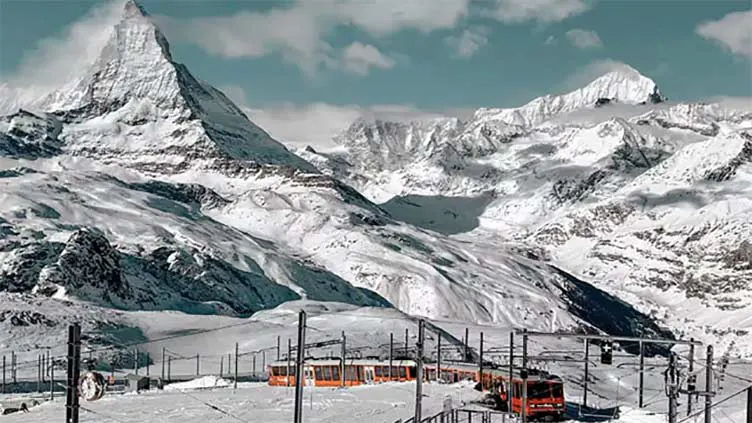This year is already shaping up to be another bad one for glaciers in the Swiss Alps, with the snowpack covering them around 30 percent below the 10-year average, according to the scientist tracking their decline.
Every year in April, when the snowpack reaches its peak, the Glacier Monitoring in Switzerland (GLAMOS) organisation surveys around 15 glaciers. “This year, the conditions are quite similar to 2022 which had record ice losses. Once again, we have very little snow,” GLAMOS chief Matthias Huss told.
“It’s not as dramatic in every region as it was in 2022, but we’re still well below average,” the glaciologist said, referring to snowpack cover. “There are even regions with a deficit of up to 50 percent” below the 10-year average for the depth of snowpack covering the surface of the glaciers.
“The preconditions for the coming summer are therefore bad, as it stands. But we cannot say if we will once again have a record melt during the summer,” as that will depend on the temperatures over the coming months. The snowpack is doubly important for glaciers because the fresh snowfall not only feeds them but also provides them with a protective layer in the summer sunshine.
For the first time this year, snowpack measurements were made on a glacier located at around 4,100 metres (13,450 feet) above sea level. “We had zero centimetres of snow depth. There was really nothing there at all. It was surprising,” said Huss. The situation is “serious for the glaciers when even at 4,000 metres there is no snow towards the end of winter”.—INP










